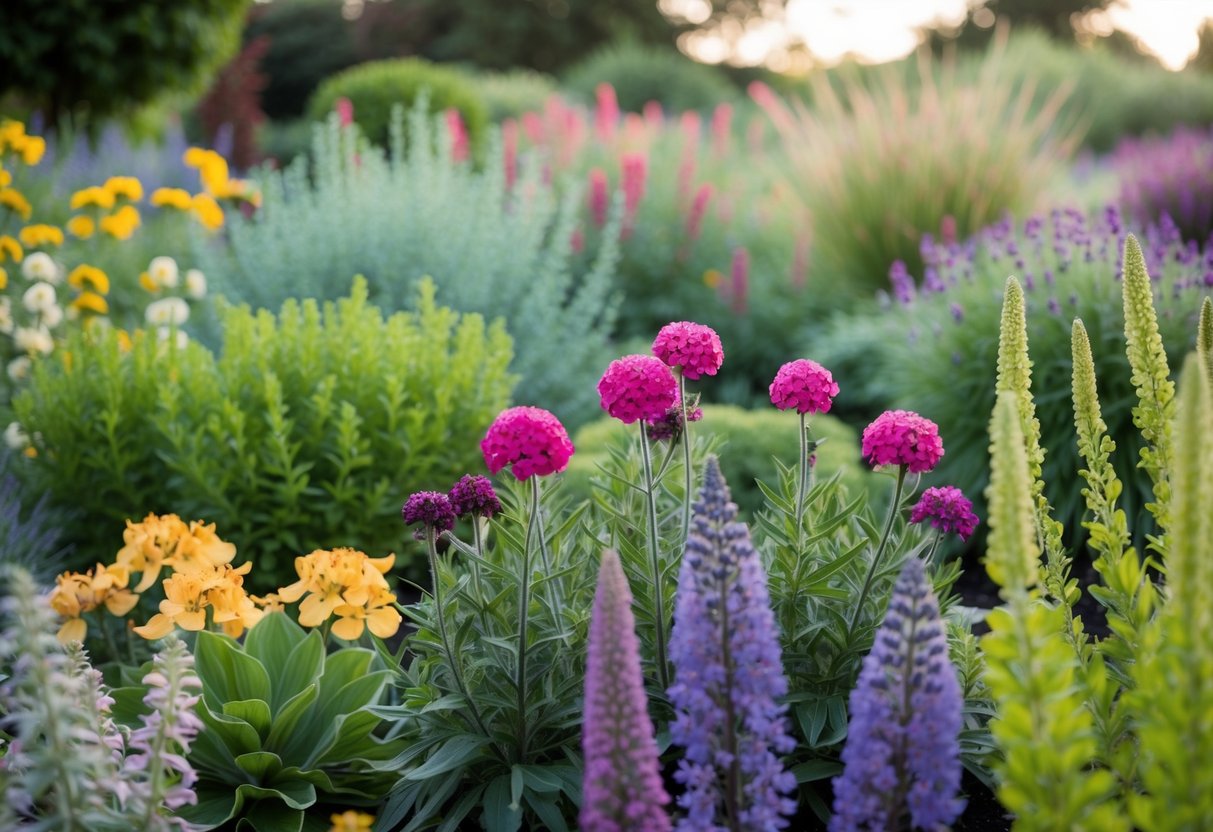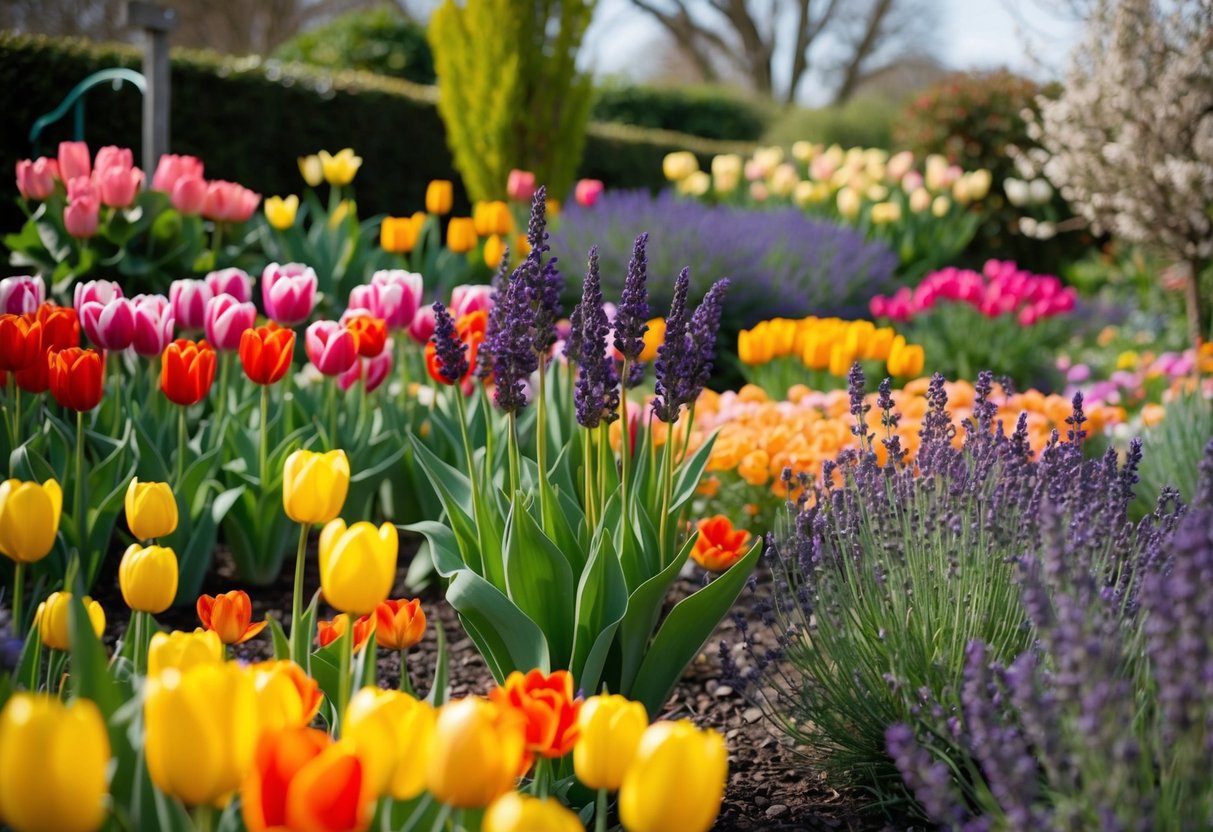What is the Longest Flowering Plant in the UK? Discover the Year-Round Bloomers
When you dream of a vibrant garden that bursts with color all year long, you’ll want to know which flowers promise the longest bloom. In the UK, the Penstemon is one of the longest flowering plants. These flowers not only offer a range in colors, but they also attract pollinators like bees and butterflies, ensuring that your garden is both beautiful and buzzing with life.

Imagine walking through your garden and seeing plants that thrive through summer and hold their blossoms until the first sign of frost. Varieties like the Penstemon, with names such as ‘Osprey’ and ‘Raven,’ provide just that. By planting these, you add a splash of color and a touch of elegance to your space.
You’re not limited to just one type of plant. Perennials like the Coreopsis also extend their flowering season from early summer into autumn.
By combining these types of plants, your garden will become a haven of relaxation and beauty throughout most of the year. This mix of plants ensures that your garden remains lively and colorful, even as the days grow shorter.
Characteristics of Long-Flowering Perennials

Long-flowering perennials are a delightful addition to any garden. They provide vibrant colors and can bloom for an extended period, unlike annuals. These plants are perfect for those who want consistent beauty without the hassle of replanting each year.
Full Sun
Many long-blooming perennials thrive in full sun. Sunlight is crucial for their energy, helping produce vibrant flowers. Make sure your garden spot catches plenty of rays to encourage healthy blooms.
Well-Drained Soil
Planting in well-drained soil is important for these perennials. It prevents root rot and encourages strong roots. Consider mixing in some sand or compost to improve drainage if needed.
Drought-Tolerant
Some of these plants can handle dry spells well. Choosing drought-tolerant varieties means less worrying about watering during hot and dry seasons. This makes them ideal for areas where water might be scarce.
Long Bloom Time
These perennials stand out due to their long bloom time. They can flower for months, bringing ongoing beauty to your garden. For example, coneflowers are popular for their extended blooming period.
Diverse Options
There are many different types of long-flowering perennials. From milkweed to red yarrow, you can choose plants that suit your garden’s look. This variety allows for a personalized and colorful display in every season.
Popular Long-Flowering Plants in the UK

In the UK, many plants are known for their long flowering periods, adding vibrant colors to gardens throughout the seasons. Below are some of the most popular long-flowering plants that thrive in UK gardens, each bringing unique features and benefits.
Achillea (Yarrow)
Achillea, or yarrow, is prized for its long-lasting blooms and variety of colors—from white to vibrant reds and pinks. These flowers not only attract butterflies to your garden but are also known for their medicinal properties.
Yarrow thrives in well-drained soil and can tolerate periods of drought, making it a practical choice for many gardeners. They start blooming in early summer and continue well into the fall. Regular deadheading encourages a lengthy flowering season. The plant’s fern-like leaves add texture to gardens, providing a lovely backdrop to other flowering species.
Geraniums, Especially Hardy Varieties
Hardy geraniums are popular because they can withstand the UK’s changing weather conditions. These perennials are known for their simple care and resilience, producing flowers in shades of pink, purple, and blue.
They begin to bloom in late spring, with some varieties continuing to flower until the first frost. Their foliage is attractive, often providing the garden with some color even after the blooms fade. Plant them in full sun to partial shade, and they will reward you with a season-long display.
Echinacea (Coneflower)
Echinacea, known as coneflower, brings a splash of color with its daisy-like appearance. Available in shades like purple, pink, and white, these flowers bloom from midsummer to early autumn.
Coneflowers are highly attractive to pollinators, such as bees and butterflies. They prefer full sun and thrive in well-draining soil. Echinacea is both beautiful and functional, as the roots are often used in herbal remedies. Deadheading can extend their blooming period, but leaving some seed heads on the plant will provide winter interest and food for birds.
Salvia
Salvia, particularly Salvia nemorosa, is a garden favorite for its spiky blooms and aromatic foliage. These plants are available in various colors, including blue, purple, and pink, adding vertical interest to garden designs.
They bloom from late spring through summer and sometimes into early autumn if regularly deadheaded. Salvia thrives in sunny locations with well-drained soil. It’s also drought-resistant once established, making it low-maintenance. Bees and hummingbirds love these flowers, making salvia a valuable plant for supporting wildlife.
Coreopsis
Coreopsis is known for its cheerful daisy-like flowers, usually in yellow, though some varieties come in red or pink. It begins blooming in early summer and continues until autumn, offering a prolonged display.
These flowers thrive in full sun and tolerate poor soil conditions, making them ideal for low-maintenance gardening. Regular deadheading will promote more blooms. Coreopsis attracts butterflies and is deer-resistant, adding to its appeal in wildlife-friendly gardens. The bright, sunny hues of coreopsis make it a joyful addition to any planting scheme.
Gardening Tips for Extended Blooms

To enjoy blooms for a longer time, try deadheading. By removing spent flowers, you encourage plants to produce more blooms. This simple task can make a big difference in your garden’s appearance.
Consider practicing the Chelsea Chop to extend the flowering period of your plants. Cut back a portion of tall perennial plants in late May. This will stagger their bloom time and result in more flowers throughout the season.
Shearing is another useful technique. Trim your plants lightly after their first bloom phase. This helps maintain shape and encourages a fresh flush of flowers.
Design your flower beds with a variety of plants. Mixing early and late bloomers ensures color throughout the growing season. Incorporate both annuals and perennials for continuous interest.
A cottage garden style can also help extend bloom time. With its mix of different plants, you’ll have flowers blooming at various stages. This diversity supports pollinators and adds charm to your garden.
When planning your garden design, consider the bloom time of each plant. Researching and selecting plants that thrive in your local climate can maximize their flowering potential. Combine different plants strategically in your space.
Gardening is a time to experiment. Don’t hesitate to move plants around to find the best spot for them. Observing how they perform in different locations can help you achieve longer blooms in your garden.
Supporting a Healthy Ecosystem

To support a healthy ecosystem, consider creating a wildlife garden. This type of garden attracts various animals and insects, making your environment more vibrant and balanced.
Pollinators like bees and butterflies play a crucial role. They help plants grow by transferring pollen. You can attract them by planting wildflowers that bloom across seasons.
- Wildflowers: Plants like lavender and daisies.
- Benefits: Improved plant growth and increased variety in your garden.
While pollinators are often the stars, other beneficial insects such as ladybugs and hoverflies also contribute. They control pests and reduce the need for chemicals, making your garden safer.
- Ladybugs: Eat aphids and small pests.
- Hoverflies: Help with pollination and pest control.
Creating a garden for a variety of creatures isn’t hard. Simple steps make a big impact. Add a small water feature to provide hydration. Bird baths or small ponds work well.
Additional Tips:
- Choose native plants for your area to make maintenance easier.
- Leave some leaf litter; it offers shelter for insects.
Supporting these elements in your garden contributes to a healthier ecosystem, fostering growth and diversity. By encouraging a balance in nature, you’re taking steps toward a thriving environment.
Design Considerations for a Varied and Vibrant Garden

Creating a vibrant garden can be an exciting project. Start with garden plants that offer diverse colors and textures. Plants like masterwort and valerian are popular choices for adding elegance and color. Combine these with taller plants to add depth and interest.
Ground cover can help fill in spaces and keep weeds at bay. Options like creeping thyme or sedum are great for filling gaps and adding a lush look. They work well interspersed among larger plants or around pathways, making your garden feel fuller and more layered.
Consider adding a rock garden for variety. Rock gardens provide structure and texture, as well as a low-maintenance option for planting hardy species. Ideal plants for rock gardens include Alpine species or drought-tolerant plants like lavender or thyme.
When choosing companion plants, think about how they interact. Some plants can help others thrive, like marigolds with vegetables, repelling pests naturally. Selecting the right combinations can lead to a healthier garden and save you time on maintenance.
Keep in mind that garden design is personal and reflects your style. Mix and match plants, ground cover, and structures to find the arrangement that speaks to you. A blend of colors, shapes, and textures will help make your garden both varied and vibrant.







